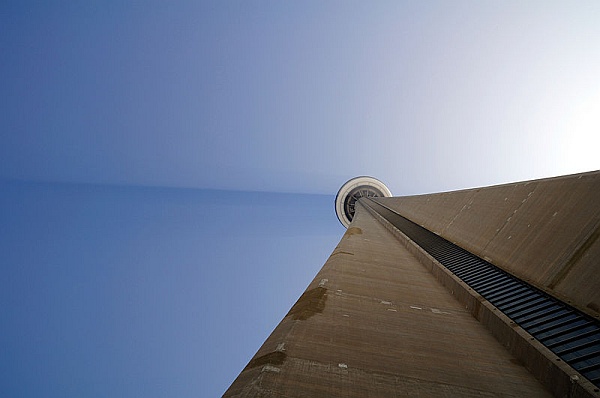
How can a building cast a shadow on the sky? The label on this photograph explains it: Tyndall effect at CN Tower, Toronto.
The Tyndall effect was new to me so I looked it up. Named for physicist John Tyndall (1820-1893), it describes how light is scattered as it passes through a colloid.
A colloid is a gas, liquid or solid that has particles microscopically and evenly dispersed within it. Both natural and man-made colloids exist. Some natural examples are fog, smoke, milk and gelatin. Opals are colloids whose beauty comes from the Tyndall effect.
In this photo the air is a colloid. Some of the particles in it are natural (water droplets and dust), some are man-made (fine particulate pollution that generates smog). In either case the particles scatter sunlight and we can see the beam of sunlight.
Despite reading a lot about it I didn’t really understand the Tyndall effect until I watched this educational video. The narrator first shows that a laser beam cannot be seen as it passes through plain water. Then he puts two drops of Dettol (a cleaning product) into the water and the laser beam appears.
Pretty cool, huh?
So when you see a shadow on the sky, you know there’s something in the air.
(photo by Wladyslaw, a featured picture on Wikimedia Commons. Click on the photo to see the original. Video posted by ksvsrao on YouTube.)
Never had any idea! That is “way” cool. Thanks Kate for the lesson.